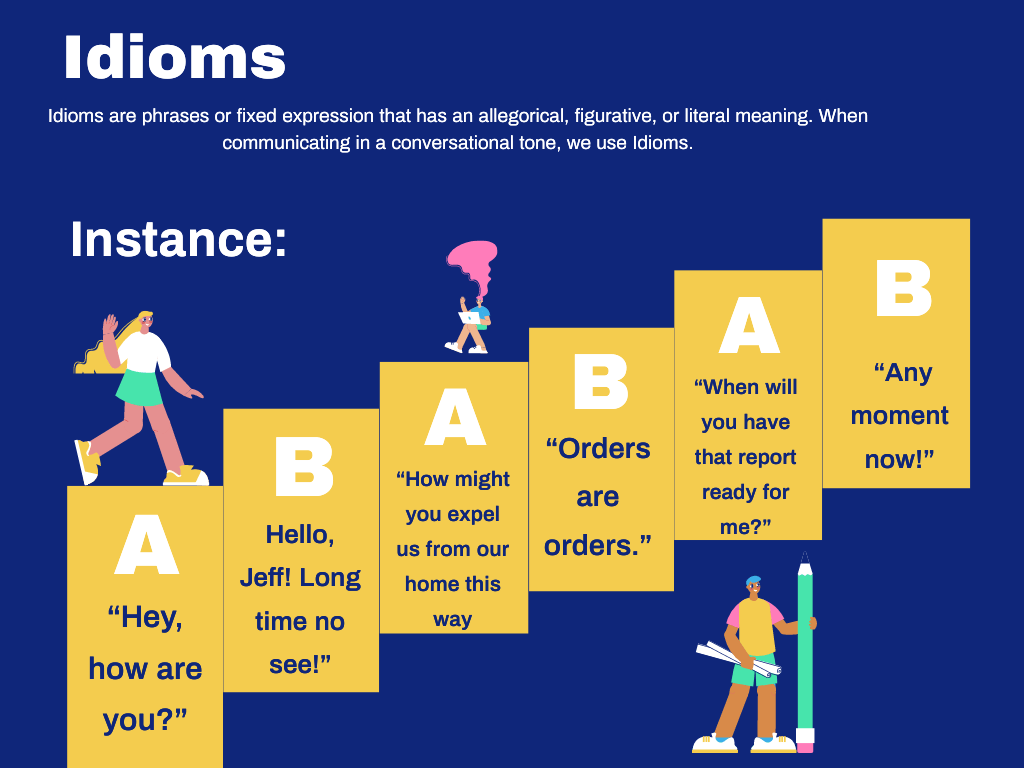Basically, writing is one of the finest methods to express thoughts and ideas to others. However, in order to draw the readers inside your writing, you may employ interesting language elements and techniques. Usually, language techniques play a vital part in captivating the audience and helping them grasp the topic in a better way, whenever writing an English novel, literature, or an assignment on language analysis. In English, there are several language techniques available. But for your better understanding, here we have shared only a list of some most commonly used English language techniques with examples. Continue reading this blog post to update your knowledge.
Before moving to the list of various English language elements and techniques, first, let us see what a language technique means.

Definition of Language Technique
A language technique is a crucial component the authors utilize to accentuate their concepts when preparing a story or an essay. It has a common connection with the sentence structure, tone, choice of words, etc. Mainly, to help the readers grasp their views, the writers primarily use language techniques in their work. Note that, language technique can be found anywhere in a tale, book, poetry, or essay.
Assonance, idioms, personification, imagery, proverbs, onomatopoeia, imperative, etc. are some popular language techniques in English.
Uses of Language Techniques
Students can improve their writing with the help of language techniques. Moreover, a high score is also possible if you are well-versed in language strategies. But to boost your score, you need to know everything about literary devices and language techniques.
Find here, the major uses of language techniques.
- It will help you know how writers gain an impact on writing.
- This helps you develop your writing skills and gain impact by using a variety of writing techniques (transactional, creative, and oral presentations).
- Also, it helps you meet unit standards for studying the language.
- To analyze oral, poetic, and transactional texts.
- You can study a variety of language techniques in the English language. Likewise, these methods are valuable in making an extraordinary story or exposition. In addition, these strategies assist you in writing in a variety of styles and formats. Furthermore, these are the fundamental writing strategies.
Importance of Language Techniques
Language techniques are significant because it
- Put your ideas into words
- Give artistic context
- Give a narrative some life
- Create a logical structure using language and words.
- Make the reader understand the story’s objective.
- Analyze how well readers comprehend a tale.
- Inspire both the author’s and the reader’s imagination
- Visualize the scenes in a tale to better understand them.
15 Important English Language Techniques
Here, let’s discuss the 15 most important language techniques that you should know.

1. Imagery
Imagery is a famous language technique. It is very helpful for college students. It empowers the contender to make a picture or subject in the reader’s mind. This builds a tangible impression in their brain. The aspirants can relate their assignment with the assistance of imagery.
Instance:
In the sentence: The music was moving to the point that our entire body was shaking as though it originated from inside us.
2. Assonance
It is the reiteration of the vowel sounds making an inner rhyming inside sentences and phrases.
Instance:
In the sentence, “The mother talked in a low smooth tone.” This contains the redundancy of the “o” sound. This shows there is a redundancy of a vowel sound.
3. Imperative
Imperatives are the most significant language techniques. We use imperatives to provide commands, orders, instructions, or warnings. If you demand someone, at that point we use “please.”
Instance:
- Come here!
- Sit down!
- Don’t walk on the road.
4. Proverb
Proverbs are like idioms. They are additionally comprehended because of their continuous use. Proverbs are broadly utilized by everybody. Proverbs are independent sentences that express a reality dependent on the presence of the mind or shared understanding. A significant number of them are partitioned into minor sentences after some time.
Instance:
“You must try to frame better propensities in your daily habit. Go to bed early, right on time to rise, that kind of thing!” (Seems like ” Early to bed, early to rise, makes you healthy, wealthy, and wise”)
“I don’t know why individuals are stunned that he is suspected of stealing. In case the shoe fits.” (In short “If the shoe fits, then wear it.”)
“Indeed, bring your companions. The more, the merrier!”.
5. Minor sentences
Minor sentences are otherwise called irregular sentences. They comprise the following:
- single words
- sentence fragments
- interjections
- idioms
- Proverbs
There are two important elements of a Minor sentence:
Single Words Sentence
In conversational English, we utilize single words to get the reaction or details from someone else. A portion of the single-word sentences is sentence words, single-word sentences, or simple-word sentences.
- A: “Where’s your meeting again?”
- B: “Los Angeles.”
Even though individual B reacted in a single word, it contains all the significant point that is required for the discussion.
Sentence Fragments
We regularly use sentence fragments as independent sentences. Coming up next are the Instances:
- Phrases
- Incomplete clauses
- Dependent clauses
In conversational language, we utilize these language techniques. At the point when we talk or react to someone else, we utilize this language technique.
Instance:
- Person A: “Would you say you will eat soon?”
- B: “In about 60 minutes.” (prepositional expression)
- Person A: “Would you like to go to a film with me later?”
- B: “Sounds great!” (deficient provision)
- Person A: “When did you know that you wanted to join politics?”
- B: “When I was in school.” (subordinate condition)
Interjections
They bring emotions, communicate significance, and feel. Interjections are categorized into two parts – primary and secondary interjections.
Primary Interjections
Primary interjections are lone words got from sounds, as opposed to from existing word classes. It despite everything has generally perceived meaning. Some basic primary interjections are:
- Argh (an expression of disappointment)
- Brr (an expression of being cold)
- Eww (an expression of sickening)
- Grr (an expression of outrage)
- Ooh (an expression of surprise)
- Phew (an expression of alleviation)
A comma helps in connecting the interjections to major sentences. They can likewise remain all alone as minor sentences. You can accentuate an interjection with the assistance of exclamation marks.
- “Ooh! What a lovely dress.”
- “Brr! It’s cold here!”
- “Eww! I hate coconuts!”
Secondary Interjections
These are single words or short sentences that have a place with other existing word classes. Some regular Secondary Interjections are:
- bless you
- congratulations
- good grief
- hell
- hey
- hi
- oh my
- oh well
- shoot
- oh my God
- well
- what
- wow
Secondary interjections are regularly punctuated alongside exclamation points. For Instance:
- “Gracious my God! We won the lottery!”
- “Amazing! What an incredible accomplishment!”
- “Congrats! That was a noteworthy success.”
But we can likewise have more fragile secondary interjections punctuated with periods or interrogatives that use question marks.
Instance:
- “Well, shoot. I truly thought we were going to win.”
- “For hell’s sake. I didn’t see that coming.”
- “Well? It is safe to say that we are heading out to watch a film?”
- “What? You don’t care for coconuts?”
6. Idioms
Idioms are phrases or a fixed expression that has an allegorical, figurative, or literal meaning. When communicating in a conversational tone, we use Idioms.

Instance:
- A: “Hey, how are you?”
- B: “Hello, Jeff! Long time no see!”
- A: “How might you expel us from our home this way
- B: “Orders are orders.”
- A: “When will you have that report ready for me?”
- B: “Any moment now!”
Idioms are as often as possible utilized in regular discourse and writing. They are truncated, with the full expression left to be comprehended by the audience or reader. For Instance:
Instance:
- A: “I experienced all the difficulty of landing her this position, she still figured out how to mess it up.”
- B: “Well, you can lead a pony to water.” (Short type of “You can lead a pony to water, but you can’t make it drink.”)
- A: “I took them to the best café around, but they said they would prefer to have cheeseburgers.”
- B: “What do you anticipate? Pearls before swine.” (In short “cast(one’s) pearls before swine “.)
7. Personal Pronoun
Words, for instance, I, you, me, my, our, he, and she, is called personal pronoun. The objective is to pull in the reader’s consideration immediately. It makes the readers engaged and locked in.
Instance: You can create a difference.
8. Neologism
Did you ever hear the below-mentioned words?
- Amazement
- cold-blooded
- blushing
- gnarled
What do you see, what are the normal things in these words?
Shakespeare designed them and named them neologisms. Neologism is a novel word or expression that the vast majority of writers don’t utilize now. Shakespeare utilized neologism in his poems and stories.
Instance 1
butter: to provide a long, meandering speech about vulnerability
Butter consolidates different words like jabber and falters to make another word with another importance.
Instance 2
Onesteva: the sound a free telephone makes
This word is an endeavor at having a word we know so well.
Instance 3
Sarchasm: the inlet between the creator of mocking shrewdness and the individual who doesn’t get it
This word consolidates sarcasm with a gap for a hilarious novel word.
Kinds of Neologisms
As there is an assortment of approaches to creating novel words, there is an assortment of sorts of neologisms. Here are a couple of specific kinds of neologisms:
Portmanteaus or Blend Words
Portmanteaus do exactly what they state: Two words are mixed together to make another word that consolidates their implications.
Here are a couple of Instances of mixed words:
- smoke + fog = smog
- spoon + fork = spork
- breakfast + lunch = brunch
Derived words
Derived words are words that use old Greek and Latin expressions to coordinate the English language.
Here are a couple of Instances of derived words:
- Latin word: Villa
- Meaning: house or villa
- Derived words: village, villa, villager
- Latin word: sub
- Meaning: under
- Derived words: subway, submarine
- Latin word: Copia
- Meaning: plenty
- Derived words: copious, cornucopia
Transferred Words
Transferred words are the words that take derived words to a new level. They envelop words taken from a different language and utilized in a balanced structure in English.
- herbs from French is called herpes
- alligator from Spanish is called lizard
- wiener dog from German is called wiener – hot dog
New words originate from creativity and creation. Sometimes we consolidate the current words and acquire some from different societies and languages.
9. Rhyme
Rhyme is the redundancy of comparative-sounding words happening toward the finish of lines in songs or poems. It gives a satisfying impact on a song. Also, it provides itself as a gadget smoothing the advancement of remembrance.
For Instance, all nursery rhymes comprise rhyming words to ease learning for kids. This encourages them to remember a poem easily.
We don’t appear to overlook the nursery rhymes that we learned as a child. The following are a couple of nursery rhyme Instances alongside rhyming words:
Instance:
- Baa baa black sheep, have you any wool?
- Yes sir, yes sir, three bags full!
- One for the master, one for the dame,
- And one for the little boy who lives down the lane.
10. Simple sentences
A simple sentence as a language technique is exceptionally helpful for college students. It builds communication straightforwardly. Also, they’re small and to the point. Simple sentences are the most straightforward approach to drawing in the reader’s mind. It is a well-known language technique.
Instance:
- The services are costly
11. Onomatopoeia
Onomatopoeia is a kind of language technique that duplicates the regular sounds of a particular thing. It makes an audio effect that emulates the thing portrayed. This makes the description progressively expressive and intriguing.
Instance:
- “The spouting stream flowing in the woods.”
It is a more significant portrayal than simply saying, “The stream flowing in the woods.” Moreover, it has been said to draw in the consideration of the reader. It is done deliberately to cause the reader to notice and hear the sound of a “spouting stream.” This is building the expression progressively successful.
12. Personification
When it comes to personification, you relate the characteristics of an individual to a non-human entity. Personification builds non-living entities that appear to be enthusiastic and lifelike. Besides, it likewise contributes to our feeling of fellowship with these non-living items.
Instance:
- Raindrops danced on the asphalt
13. Slangs
Slang comprises words, that are non-standard in a provided language and are commonly addressed to show incorporation in a specific social gathering.
Instance:
- “The previous evening was a flop. I should go to a party with my companions, but they floundered on me. They all are floppers.”
Here the slang being utilized is “flop” which implies an arranged occasion doesn’t occur. A flopper is somebody who drops the plan at the last moment.
14. Slogan
An appealing language technique gains the reader’s attention. It has small and striking expressions.
Instance:
- ‘In case you think education is costly, try ignorance’ – Derek Bok (US lawyer and educator)
- Until now, this will cause you to know the language technique profoundly.
15. Symbolism
When used correctly, symbolism can be one of the most effective features of the English language. It is a great way to improve your writing and produce text that is interesting. Colors, places, sounds, and objects are just a few examples of the many things that can be used as symbols. Symbolism can be used in a variety of ways, but it is typically used to provide additional insight into the text’s main themes.
Instance:
Since red is frequently associated with danger, when we see a building painted red in a text, we get the impression that it is not a safe location.
Emotive language
Any words that cause an enthusiastic and emotional response. These are the Instances of emotive language.
Instance:
Put that in the recycle container.
This sentence isn’t emotive. It is an order, but it doesn’t cause an emotional response.
You ought to reuse it because it spares the planet.
This is the emotive sentence. It proposes an activity that delivers an emotional reaction.
Don’t you need to spare the planet? How might you decide not to reuse it since it spares the planet?
The emotive reaction causes a response or a reaction.
The Emotive Language Effect
Particularly applicable, the Emotive language causes an impact on the crowd. At the point when utilized successfully, emotive language can make a group of people respond with a certain goal in mind.
This crowd control is a sort of talk. Subsequently, emotive language can make a group of people make a move or contend with the speaker.
Emotive language ought not to be abused. Moreover, we should utilize it when there is a reason. The speaker ought to accomplish what he/she precisely needs. Thus, utilizing emotive language successfully can be extremely helpful to a speaker.
Conclusion
Hopefully, by now, you will have gained a clearer knowledge of the most commonly used English language techniques. Always remember that you can write your English assignments well and execute language analysis with ease if you have a solid understanding of language features and strategies. Most significantly, employing language techniques will also help you receive top grades for your assignments.
1. What are 10 language techniques?
10 of the commonest language techniques are Alliteration, Personification, Simile, Foreshadowing, Satire, Symbolism, Onomatopoeia, Metaphor, Hyperbole, and Oxymoron.
2. What are language techniques?
Language techniques are the specific elements of the language that a writer uses often so that his or her story emphasizes more to the readers and the theme of the writing becomes clearer.
3. How do you identify language techniques?
To identify a language technique, a reader needs to read the content carefully first and look for phrases and words that are possibly used as language techniques.
4. How do language techniques affect the reader?
Language techniques create a long-lasting impression in the minds of readers. The readers remember a piece of writing more because of these techniques. This is the reason writers often use these techniques.



